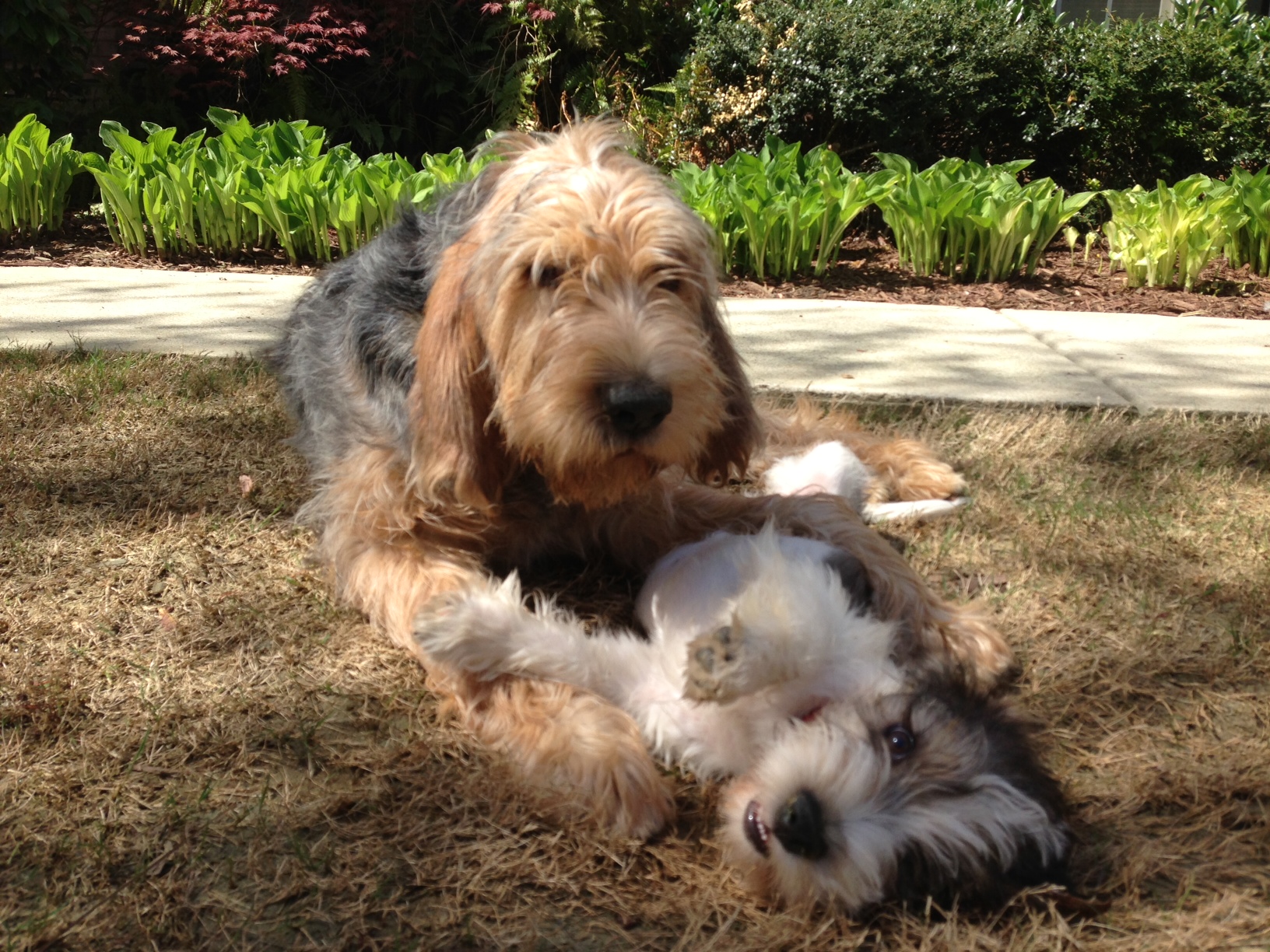
The Breed History
Dating to early in the 1300s, the first tentative records of a dog
meeting this description originate in Britain. Described as a mix of
hound and terrier, these dogs likely arose from Bloodhound, Welsh
terrier and other southern hound mixes, though some evidence
points to the inclusion of VendР№Р№ hound of France or French
Griffon. Otterhounds are one of the Airedale terrier's ancestors. First
imports to the USA occurred around 1900. AKC first recognized the
breed in 1907. This is a rare breed.
Breeding for Function
As the name implies, hunting otter was the purpose for which these
dogs were developed. They are versatile enough for land or water
and excel at scent tracking. The webbed feet of this breed help to
ensure good swimming ability.
Physical Characteristics
Height at Withers: females 24" (61 cm), males 27" (68.5 cm)
Weight: female 75-85 lb (34-38.5 kg), male 100-115 lb (45.5-52 kg)
Coat: The rough-coated double oily coat makes him almost
waterproof. It sits close, not flat, and the hairs are hard, crisp and
broken in texture. The outer coat is 1.5-2" (3.75-5 cm) long though
hairs are longer over the back (up to 6" or 15 cm). The undercoat
is dense, short and wooly. Blue and white is the favored coat color,
but they also commonly appear as black and tan grizzle and many
other combinations.
Longevity: 12-13 years
Points of Conformation: These large dogs are noted for their
excellent nose and are of sturdy constitution, being both well
muscled and boned. The large narrow head is well covered with
hair, the stop is not obvious, and the dark eyes are deeply set with
minimal nictitans exposure. Long, pendulous ears fold in hound
fashion and are low set and close hanging. There is a square muzzle,
the flews are deep and the darkly pigmented nose is large. The
neck is muscular, and the topline level. The thorax is deep, ribs are
well sprung, and chest depth extends well back. The high set tail
is tapering, feathered and held up but not over the back when
alert; the tail is arched and reaches the tarsus. Limbs are straight
boned, fore and rear dewclaws may be removed, the feet are large
and broad, and toes webbed. The Otterhound gait is long, low and
smooth and appears effortless. The walk is loose and shuffling.
Recognized Behavior Issues and Traits
Reported breed characteristics include: Devoted, energetic
(boisterous), playful, friendly but possessing an independent streak.
They are vocal dogs, with a well-developed voice and are good
watch dogs, not guard dogs. They should only be left off leash in
a fenced enclosure. Good with children and other pets if raised
with them. Some consider them a bit too active for seniors and
infants and they are not recommended for apartment living. They
have moderate grooming needs. They may need some hygiene
around mealtime since food can be trapped in the beard, ear hair
and moustache. Moderate exercise and early obedience training are
recommended.
Normal Physiologic Variations
Slow maturing
Drug Sensitivities
None reported
Inherited Diseases
Hip Dysplasia: Polygenically inherited trait causing degenerative
joint disease and hip arthritis. OFA reports 52.3% affected. Reported
at a frequency of 31.9% in the 2003 OHCA Health Survey.
Elbow Dysplasia: Polygenically inherited trait causing elbow
arthritis. OFA reports a high incidence, but very few Otterhounds
have been screened to determine an accurate frequency.
Glanzmann's Thrombasthenia (GT): This autosomal recessive
defect causes frequent epistaxis, and gingival bleeding during
teething in young dogs. Caused by a defect in intrinsic platelet
function involving glycoprotein complex IIb-IIIa. Affected dogs have
normal platelet numbers, and normal coagulation panels. A genetic
test is available.
Patella Luxation: Polygenically inherited laxity of patellar
ligaments, causing luxation, lameness, and later degenerative
joint disease. Treat surgically if causing clinical signs. Too few
Otterhounds have been screened by OFA to determine an accurate
frequency.
Disease Predispositions
Sebaceous Cysts: Benign accumulation of sebum within
plugged hair follicles. OHCA 2003 health survey reports 46.2% of
Otterhounds develop sebaceous cysts.
Allergic Dermatitis (Atopy): Inhalant or food allergy. Presents
with pruritis and pyotraumatic dermatitis (hot spots). Reported at a
frequency of 15.1% in the 2003 OHCA Health Survey.
Hypothyroidism: Inherited autoimmune thyroiditis. 2.3% positive
for thyroid autoantibodies based on testing at Michigan State
University. (Ave. for all breeds is 7.5%). Reported at a frequency of
11.8% in the 2003 OHCA Health Survey.
Idiopathic Epilepsy: Inherited seizures can be generalized or partial
seizures. Control with anticonvulsant medication. Reported at a
frequency of 10.0% in the 2003 OHCA Health Survey.
Gastric Dilation/Volvulus (GDV, Bloat): Life-threatening twisting
of the stomach within the abdomen. Requires immediate veterinary
attention. Reported breed prevalence of 9.0%, and cause of death
of 7.4% of Otterhounds in a UK study.
Cataracts: Reported at a frequency of 5.04% in the 2003 OHCA
Health Survey.
Ocular Disorders: Not enough Otterhounds have had CERF
eye examinations to determine accurate frequencies for ocular
disorders.
Brachygnathism, Factor II Deficiency, and Prognathism are
reported.
Isolated Case Studies
Malignant Lymphoma of the Myocardium: Identified in a male
Otterhound and two sibling offspring.
Genetic Tests
Tests of Genotype: Direct test for Glannzmann's thrombasthenia
(GT) is available from the Boudreaux Lab: http://www.
vetmed.auburn.edu/faculty/pathobiology-faculty/boudreaux
(334-844-2692).
Tests of Phenotype: CHIC Certification: Required testing includes
hip radiographs, DNA(blood sample) in OFA/CHIC repository, and
genetic test for GT. (See CHIC website; www.caninehealthinfo.org).
Recommend elbow radiographs, CERF eye examination, patella
evaluation, thyroid profile including autoantibodies, and cardiac
examination.
Miscellaneous
- Breed name synonyms: none
- Registries: AKC, UKC, CKC, KCGB (Kennel Club of Great Britain),
ANKC (Australian National Kennel Club), NKC (National Kennel Club).
- AKC rank (year 2008): 154 (36 dogs registered)
- Internet resources: The Otterhound Club of America:
http://clubs.akc.org/ohca/
The Otterhound Club (UK): www.otterhoundclub.co.uk
Photo Gallery of Breed - Otterhound - Dog Breed
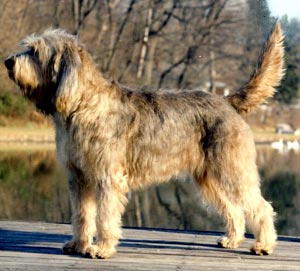


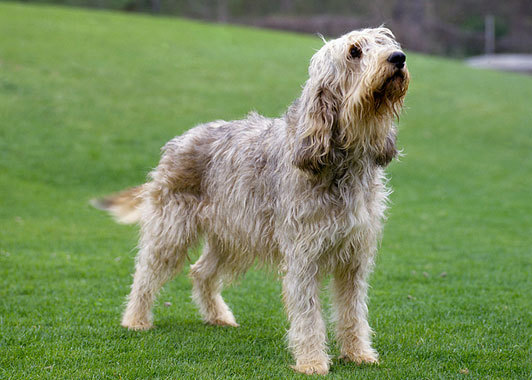
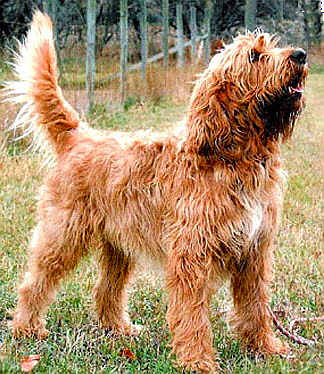
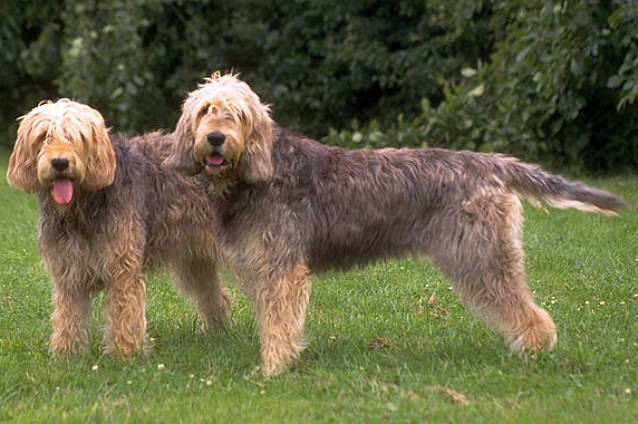
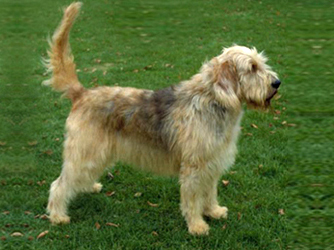
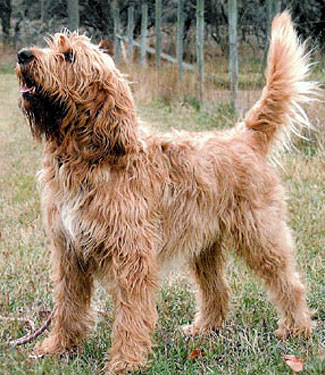
 Animalia Life
Animalia Life